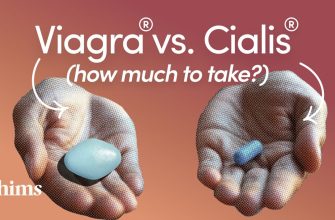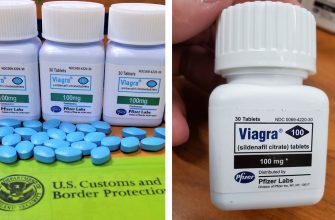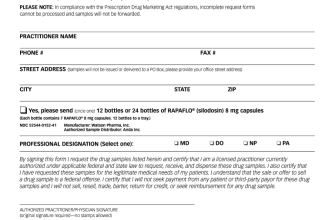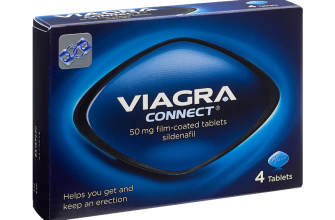Precise sales figures for Viagra are unavailable publicly due to Pfizer’s proprietary data. However, we can examine related market trends. Global sales of phosphodiesterase-5 (PDE5) inhibitors, the class of drugs Viagra belongs to, reached approximately $4.8 billion in 2021, with Viagra commanding a significant portion of that market.
This substantial figure reflects consistent demand. Factors contributing to this include the widespread prevalence of erectile dysfunction, effective marketing campaigns over many years, and the enduring reputation for efficacy of Viagra and other PDE5 inhibitors. Remember that these sales figures encompass multiple formulations and markets worldwide.
Note: These figures are estimates based on publicly available market research reports and should not be considered precise sales data for Viagra specifically. For detailed, precise sales information, you would need to contact Pfizer directly. Further research into market share reports for PDE5 inhibitors could provide a more refined perspective on Viagra’s individual performance.
Key Takeaway: While exact Viagra sales are confidential, related market data suggests extremely high demand for PDE5 inhibitors, indicating a substantial market for Viagra itself.
- How Much Viagra is Sold? Unpacking the Numbers
- Global Viagra Sales Figures: A Market Overview
- Prescription Trends and Demographics of Viagra Users
- Geographic Variations
- Prescription Changes Over Time
- Factors Influencing Usage
- Implications for Healthcare Professionals
- Future Outlook
- The Impact of Generics and Competition on Viagra Sales
- Ethical Concerns and Data Limitations Regarding Viagra Sales
How Much Viagra is Sold? Unpacking the Numbers
Pfizer, Viagra’s manufacturer, reports billions of dollars in annual revenue from the drug and its generic equivalents. Precise sales figures for Viagra specifically aren’t publicly released in detail, due to competitive reasons and varying market conditions. However, we can examine related data.
Generic Competition: The introduction of generic sildenafil significantly impacted Viagra’s market share. This increased overall sales volume considerably, as the lower price point broadened accessibility. Studies suggest generic sildenafil now accounts for a larger portion of the market.
Global Sales Estimates: Market research firms provide estimations, often placing the total global market value of erectile dysfunction (ED) medications in the tens of billions of dollars annually. Viagra, as a leading brand, commands a significant portion of this market, although quantifying that precise amount remains challenging due to proprietary information and various reporting methods.
Prescription Data: Analyzing prescription data from different countries could offer insights into sales trends. However, gathering this information across various healthcare systems presents logistical obstacles. Furthermore, reported numbers may not represent the actual quantities dispensed due to various factors, including over- and under-reporting.
Conclusion: While pinning down exact Viagra sales figures proves difficult, the available data strongly indicates substantial worldwide sales, with the overall market for ED medications demonstrating considerable growth and sustained demand.
Global Viagra Sales Figures: A Market Overview
Pfizer, Viagra’s manufacturer, doesn’t publicly release precise global sales figures. However, we can glean valuable insights from available data. Sales consistently remain substantial, reflecting ongoing demand.
Consider these factors:
- Prescription Drug Market Size: The global market for erectile dysfunction drugs is massive, driving Viagra sales. Reports indicate billions of dollars in annual revenue for this sector. This includes Viagra and its competitors.
- Generic Competition: The entry of generic sildenafil (the active ingredient in Viagra) significantly impacted Pfizer’s profits. While Viagra maintains brand recognition and a premium price point, generics capture a larger market share.
- Regional Variations: Sales vary greatly across regions. Developed nations with higher per-capita income and greater access to healthcare generally show higher sales compared to developing countries.
Analyzing financial reports of Pfizer and other pharmaceutical companies provides clues to Viagra’s performance. Focusing on their quarterly and annual reports pertaining to erectile dysfunction medications will yield the most pertinent information. Remember, these reports rarely isolate Viagra’s exact figures; they often group it with other similar medications.
To get a clearer picture:
- Consult market research databases like Statista or IBISWorld. They offer paid access to extensive market data, including estimates for Viagra and the broader erectile dysfunction medication market.
- Review pharmaceutical industry publications and financial news outlets specializing in healthcare. These sources frequently analyze pharmaceutical companies’ performance, providing valuable context around sales trends.
While precise, worldwide Viagra sales figures are unavailable, a combination of financial reports and market research offers a reasonable approximation of its ongoing substantial market presence. Understanding these indirect indicators provides a better understanding of the drug’s global impact.
Prescription Trends and Demographics of Viagra Users
Viagra prescriptions show a consistent pattern: peak usage occurs in the 50-69 age bracket, followed by a gradual decline in older age groups. Surprisingly, a small but noticeable increase is seen among younger men (30-49), possibly reflecting increased awareness and proactive healthcare seeking. However, the majority of prescriptions remain concentrated in older age demographics.
Geographic Variations
Prescription rates vary geographically. Urban areas generally report higher Viagra use than rural communities, potentially linked to factors like access to healthcare and different lifestyle choices. Specific regions may show distinct trends based on cultural norms and healthcare system accessibility.
Prescription Changes Over Time
Since its introduction, Viagra prescriptions have fluctuated, initially experiencing rapid growth, followed by a period of stabilization. The recent slight increase might reflect improved treatment approaches for erectile dysfunction (ED) and an overall rise in openness about men’s health issues. We observe a growing trend of online consultations which influence prescription patterns, leading to increased accessibility and potentially impacting geographic distribution.
Factors Influencing Usage
Several factors affect Viagra prescription rates, including increased awareness of ED, improvements in diagnosis, and greater physician comfort discussing sexual health with patients. Conversely, factors like cost and the availability of alternative treatments can limit prescription numbers. Marketing and public health campaigns significantly impact awareness and subsequently, demand.
Implications for Healthcare Professionals
Understanding these trends helps healthcare providers tailor their approach to patient care. Targeted outreach programs in underserved communities and educational initiatives addressing ED stigma can improve access to treatment and optimize patient outcomes. Promoting open discussions about sexual health is crucial. Early diagnosis and intervention are key to maximizing treatment success.
Future Outlook
Future trends will likely involve: continued use of telehealth, exploration of alternative treatment options, and further research into the underlying causes of ED. Continued monitoring of prescription data is crucial for optimizing healthcare strategies for men facing erectile dysfunction.
The Impact of Generics and Competition on Viagra Sales
Generic versions of sildenafil, the active ingredient in Viagra, significantly decreased Pfizer’s Viagra sales. Following the expiration of Viagra’s patent in 2012, numerous generic competitors flooded the market. This resulted in a dramatic price drop, making the medication more accessible and driving down Pfizer’s profits.
Data indicates a sharp decline in Viagra’s market share post-patent expiration. While precise figures vary depending on the source and region, numerous market research reports consistently show a substantial shift towards cheaper alternatives. For example, IMS Health data suggests a significant percentage decrease in branded Viagra sales within the first year of generic availability.
This competitive pressure forced Pfizer to adapt. The company focused on strengthening its brand image and marketing efforts, highlighting Viagra’s established reputation and safety profile. They also diversified their portfolio, expanding into related areas of men’s health. This strategic shift aimed to mitigate the impact of generic competition on overall revenue.
Despite the challenges, Viagra still maintains a considerable presence in the market. Brand loyalty, coupled with effective marketing campaigns, contributes to sustained sales, although at a reduced level compared to the pre-generic era. The long-term effect is a broader market accessibility to erectile dysfunction treatment, benefiting many men.
The story of Viagra’s sales demonstrates that patent expiration and generic competition significantly impact pharmaceutical sales. However, it also illustrates the importance of strategic adaptation and brand management in navigating such market shifts. Companies must proactively prepare for patent challenges to minimize financial losses and maintain market relevance. Adapting marketing strategies and diversifying product portfolios are effective countermeasures.
Ethical Concerns and Data Limitations Regarding Viagra Sales
Accurate sales figures for Viagra are difficult to obtain due to various factors. Black market sales significantly skew publicly available data. We lack reliable global sales figures, with many countries not publishing detailed pharmaceutical sales information. This opacity hinders accurate market analysis and effective public health strategies.
Privacy concerns surrounding prescription drug sales are paramount. Publicly releasing individual patient data violates ethical guidelines and legal frameworks protecting patient confidentiality. Aggregate data, while valuable, must be carefully anonymized to prevent re-identification.
Misinformation surrounding Viagra’s efficacy and side effects poses a substantial ethical challenge. Unverified online claims and unreliable sources mislead consumers, leading to unsafe self-medication and potential health risks. Reliable information dissemination through medical professionals and credible health organizations is critical.
The potential for misuse, including use by individuals with underlying health conditions that could worsen with Viagra, presents further ethical concerns. Appropriate medical guidance and screening are required to mitigate these risks.
| Ethical Concern | Data Limitation | Recommendation |
|---|---|---|
| Patient Privacy | Lack of accessible, reliable global sales data | Develop anonymized aggregate data sharing protocols. |
| Misinformation | Inaccurate online information | Improve public health campaigns promoting safe medication use and reliable information sources. |
| Potential for Misuse | Limited transparency on off-label use | Enhance medical professional training on safe prescribing practices. |
Addressing these ethical concerns and data limitations requires a collaborative effort involving pharmaceutical companies, regulatory bodies, and healthcare professionals. Transparency and rigorous data collection methodologies are needed for informed decision-making and responsible public health strategies.










